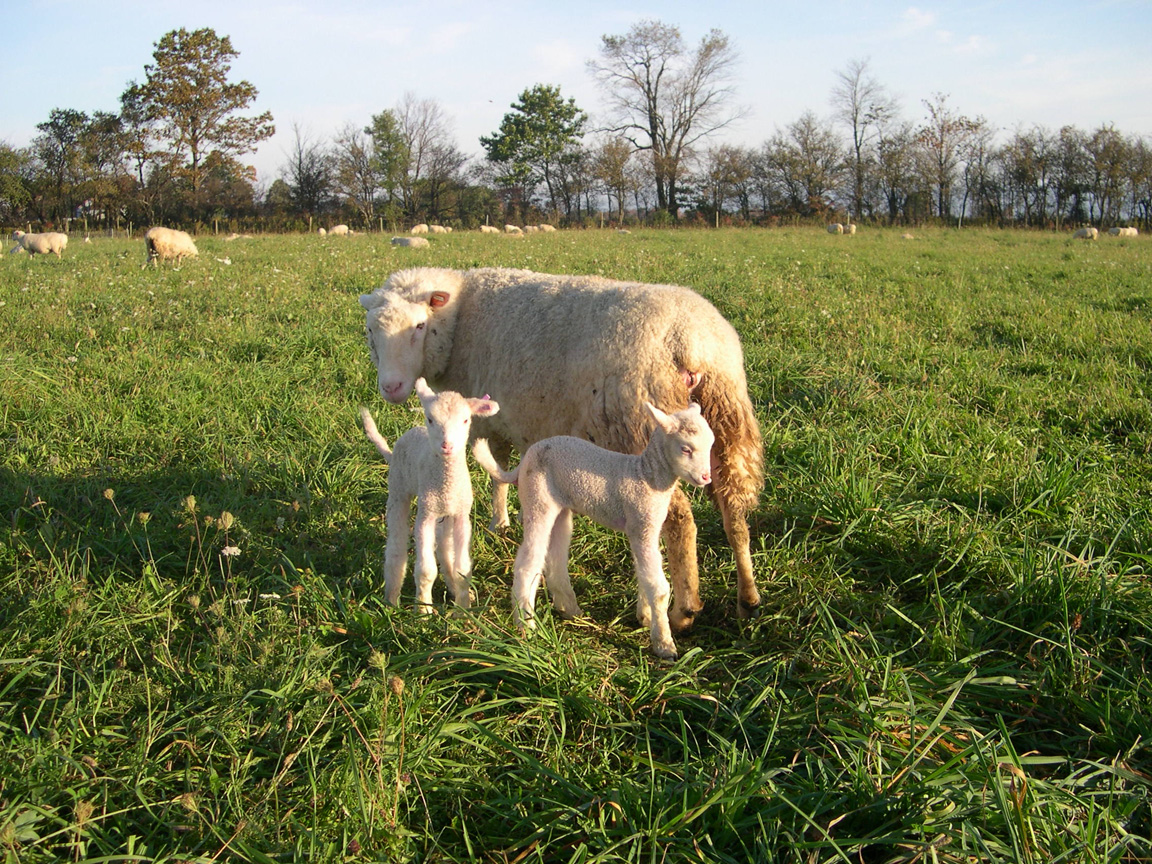|
Production Calendar
|
|
Our flock is managed to lamb at three times during the calendar
year. These lambings occur in February, mid May to mid June and finally in late September to late October. The lambing period
lasts approx. 30 days with 95% of lambs typically born during the first 21 days. The February lambing and the latter part
of the Sept./Oct. lambing occur indoors whereas the entire May/June lambing and first 2 weeks of the Sept/Oct lambing occur
outdoors on high quality pasture. Lambs born during Sept./Oct. are targeted for the milk fed lamb Thanksgiving to Christmas
market in greater New York City. Lambs born during February are targeted to the same market but centered around the Western
and Greek Orthodox Easter Holidays. Our May/June born lambs are larger, lean lambs (70-90 lbs)raised predominantly on grass
and are targeted for the Halal market in greater New York City.
Our production system is designed for that ewes will
lamb at 8 month intervals meaning that a ewe will produce three lamb crops in 2 years. As presented in our performance section,
the vast majority of our ewes produce on this schedule with mature ewes producing a 200+% crop per lambing. Therefore, many
of our mature ewes produce a 300% lamb crop per year.
|
|
Lambing Practices
|
|
Lambs born indoors are kept in 5x5 ft. lambing jugs for a fews
following birth until there are bonded sufficiently to be placed in a group pen with lambs of similar age and birth type (singles
versus multiples). Lambs are allowed access to high quality creep feed right away although it typically takes 2-3 weeks before
they consume significant quantities. The vast majority of lambs born indoors are sold as milk-fed lambs so they are never
weaned. Those remaining (generally replacements) are weaned around 60 days of age and given free access to both the grain
mix and high quality dry hay. Replacement lambs are limit fed grain (approx. 1.5 lbs/day) from approx. 75-110 lbs while they
continue to free access to either high quality harvested forage or pasture.
Lambs born on pasture are identified by
ear tagging with 12 h of age. Ewes lambing on pasture are moved before all forage within a given paddock is consumed so as
to prevent mismothering from ewes forced to leave their newborns to feed. Rotations between paddocks are done carefully with
lambing ewes so as not to force newly lambed ewes to move within the first 24 h of lambing. This is accomplished by allowing
free movement between the old and new paddock for a 24 h period after creation of the new paddock. All paddocks are created
with electronet fencing (Electronet II from Premier1Supplies, Washington,IA)which creates a flexible system so one can easily
open and close divisions between paddocks. Using electronet and electrified permanent perimeter fencing, we have not yet
encountered predator losses at lambing although neighboring dogs and a healthy local coyote population have been observed
to test the fence on occasion. Our experience pasture lambing on our farm and gained working in New Zealand and Australia
has emphasized the importance of understanding the nature of the maternal bond between ewes and their lambs. Ewes require
a certain amount of space away from other ewes at lambing and movement of ewes off the drop site must be minimized for the
first 24 h following lambing to prevent mismothering. We do not supplement pasture lambing ewes with grain as it would tend
to disrupt the maternal bond and is unnecessary from a nutritional point of view on high quality paddocks. By adhering to
a careful practice of minimizing forced animal movement during lambing, we have extremely few mismothering episodes even with
12 month old ewes giving birth to multiples for the first time.
|
|

Shown
above is a ewe with 2 day old twin lambs taken on in early October, 2004. We lamb exclusively on pasture during our May/June
lambing period and also for the majority of out Sept./Oct. lambing period as long as the weather does not turn wet and below
50 degrees. When this occurs, we move the entire lambing group indoors until lambs are marketed or weaned. Lambing on pasture
reduces labor dramatically and allows us an opportunity to select easy care sheep.
|
